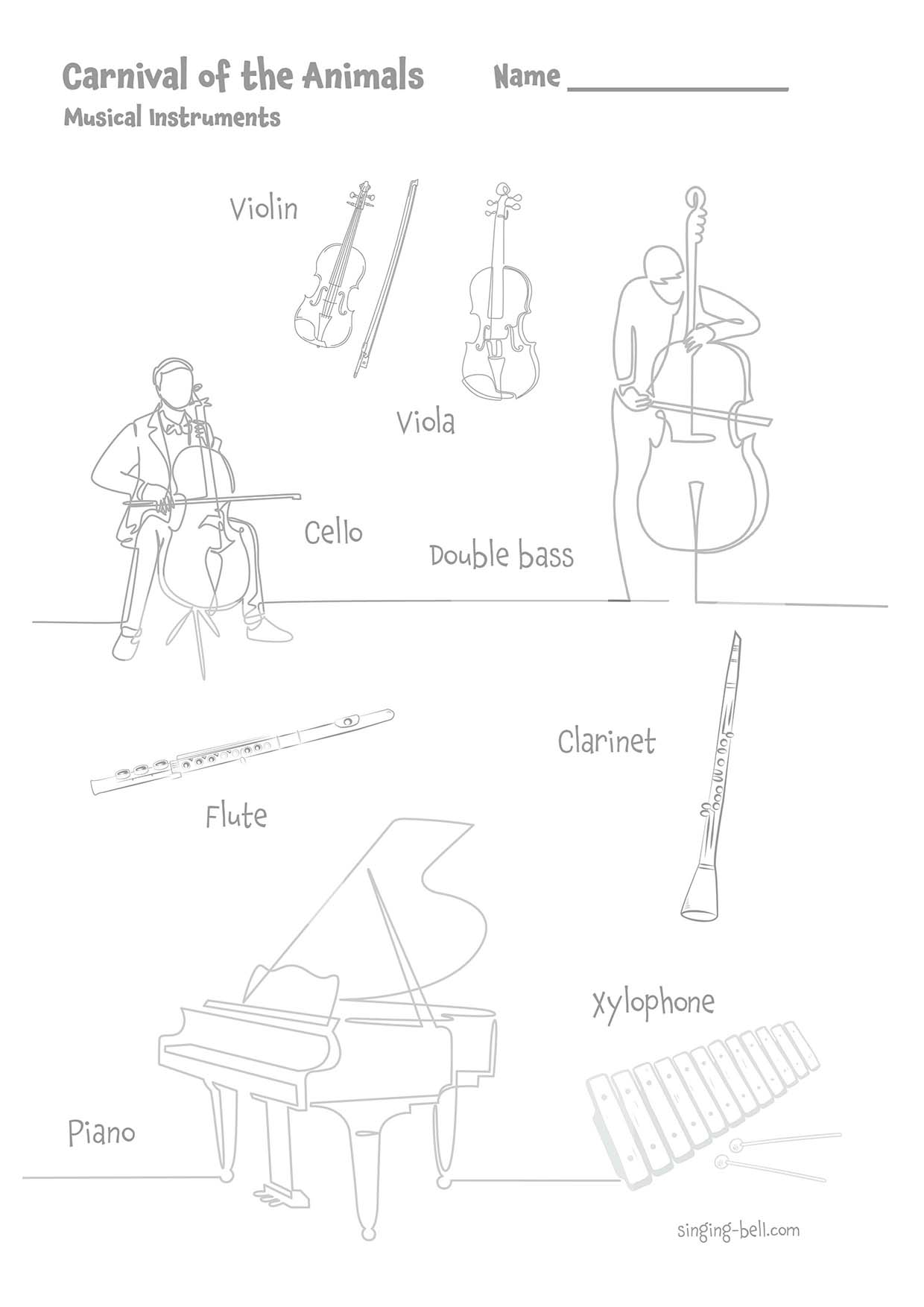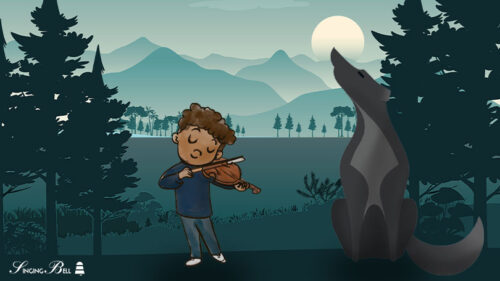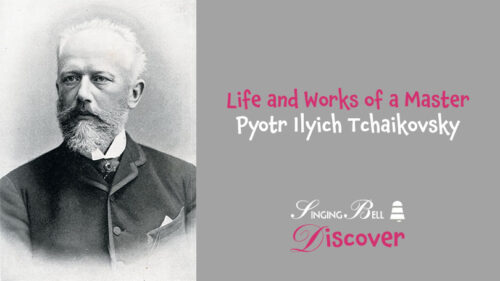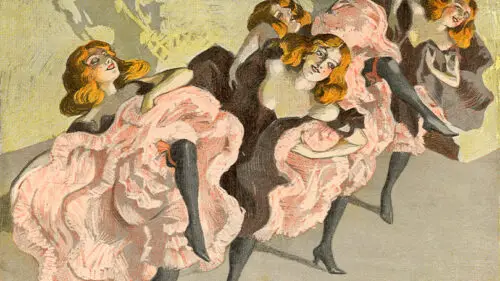
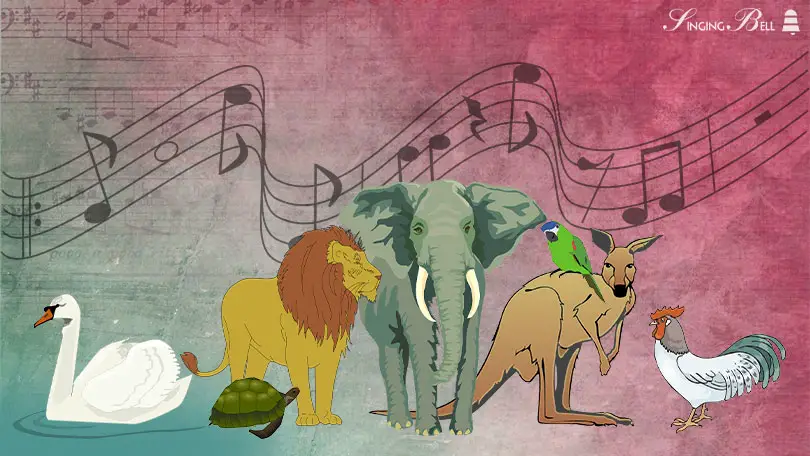
What if the animals wore musical instruments as their Carnival disguise? That’s the surreal yet effective premise of “The Carnival of the Animals”, where the composer imitates 13 animals (plus the pianists!) through the use of music. – what we call “descriptive music”.
Camille Saint-Saëns composed this work in 1886 to entertain his friends, on the occasion of the celebration of the Tuesday before Lent (English: Shrove Tuesday, French: Mardi Gras), a day that is celebrated in a special way in his homeland, France.
He asked for that work not to get published while he was alive, because he believed he would lose his prestige as a composer. Who could imagine that, after his death, The Carnival of the Animals would become one of the essential works of the classical repertoire and would make him famous all over the world?!
It is a composition for a small orchestra (chamber orchestra) with the following instruments:
- Flute / Piccolo flute
- Clarinet
- Two pianos
- Glass harmonica (or xylophone)
- Two violins
- Viola
- Cello
- Double bass
Table of Contents
Composition ID
Title: The Carnival of the Animals
Composer: Camille Saint-Saëns
Date: 1886
Place: Paris, France
Genre: Orchestral / Descriptive music
The Composer: Camille Saint-Saëns

Camille Saint-Saëns was born in Paris on October 9, 1835. His father died when he was a baby, and he grew up with his mother and aunt. He died in Algiers on December 16, 1921.
From a young age he showed his musical talent, and in 1846 (noticing how old he was?) he gave his first piano recital. When he was 13, he went to the Paris Conservatory where he began church organ and composition classes.

Throughout his entire life he was a renowned pianist. He traveled to Europe but also to the USA, the Middle East, Asia and South America, giving concerts, sometimes playing the 5 piano concertos he composed and sometimes conducting his own works for orchestra.
Videos
The project consists of 14 small parts. Each of them is dedicated to an animal. Not all instruments are played everywhere, but instead the composer has chosen the instruments for each part that describe the character of the animal.
In each part, listen and observe which characteristic of the animal the music describes – e.g. according to its tempo or its pitch.
Introduction and Royal March of the Lion
(Introduction et marche royale du lion)
The strings and the piano welcome the king of animals. The lion walks proudly. Sometimes he opens his mouth and growls – just like the piano!
Hens and roosters
(Poules et coqs)
But what gossipy animals! Listen to the hen clucking:
The violins, the viola, two pianos and a clarinet.
Wild asses
(Hémiones)
Two pianos are running all over the place.
A frantic chase!
Tortoises
(Tortues )
Have you ever seen turtles dance? Imagine: the violin family and the piano play a well-known melody in turtle speed!
The composer here borrows the musical theme ‘Can-Can’, from Jacques Offenbach’s opera “Orpheus in the Underworld”.
You can also play the melody of this dance,
known as Can Can, on the piano or the glockenspiel.
Click on the images below to see video tutorials and scores.
The Elephant
(L’ éléphant)
Are you familiar with the double bass? This giant violin is not as heavy as it seems. It is hollow on the inside and only its voice is heavy, but its song is cute, just like the elephant’s! Along with it it’s the piano playing.
Kangaroos
(Kangourous)
At times it runs and jumps, at times it stops and looks left and right. Can you hear it? How many musical instruments are playing?
Aquarium
(Aquarium)
In the water everything is lighter. Is that why the double bass with its heavy voice is missing? The rest of the string instruments, the two pianos, the flutes and the glass harmonica are swimming in the water. Close your eyes and use your imagination to swim next to the small and big fish!
People with Long Ears
(Personnages à longues oreilles)
Is it two donkeys fighting while playing music or two violins braying while fighting? It’s hard to tell…
* In this video the music (and the fight) starts at 0:32
The Cuckoo in the Depths of the Woods
(Le coucou au fond des bois)
Cu-ckoo! Cu-ckoo! Silence in the forest (piano). You can hear only the voice of the cuckoo (clarinet). How many cuckoo sounds can you hear?
Aviary
(Volière)
The flute, of course! Light as a bird. Two pianos keep it company by singing, and the strings are there with bowing wings.
Pianists (!)
(Pianistes)
Do any of you have a neighbor who is learning the piano? But, what kind of creatures are those pianists! They go up and down on the white and black keys, trying to become the best. They call this study “scales“. This is how they practice daily, which is essential for a musician. Is this true?
Fossils
(Fossiles)
Here are some animals from the old times. Only their skeletons are left fossilized on stones: fish and shells, but also bones from elephants and dinosaurs! The xylophone with two pianos and a clarinet.
The Swan
(Le cygne)
The piano plays for the water, the bow on the four strings of the cello moves with the kindness of the beautiful and elegant swan. Take a look, then close your eyes and use your imagination to go by the pond to enjoy the picture.
Finale
(Final)
The whole orchestra plays here, no one is left to complain about the celebration!
Orchestra
Listen to the whole work from beginning to end without interruption.
Activities – Free Printable PDF files
Download and Print here a PDF file with the image to complete and color the Carnival animals.

- Choose two of the carnival animals.
- Think of a story or a picture starring these two animals.
- Listen again to the music written by Saint-Saëns for the protagonists you have chosen, close your eyes and think about what you will paint.
- Paint!
Do you like to count? Listen carefully and answer.
It’s best to listen with a friend, sibling, parent, or even grandparent. Discuss your answers. Are they the same or different?
- Lion: How many times do you hear the piano open its jaws (like a lion)?
- Kangaroo: First it’s running, then it stops and it’s looking left and right. How many times does it stop?
- Cuckoo: How many times does the clarinet, that is, the cuckoo, go “cu-ckoo”?
- For how many animals there two pianos playing?
- Listen to the elephant, find the pulse, and then measure. Is it a 2/4, 3/4 or 4/4 meter?

Did you like this post?
You may also like:
A Ballet to Captivate Everyone | Tchaikovsky’s The Nutcracker for Kids



